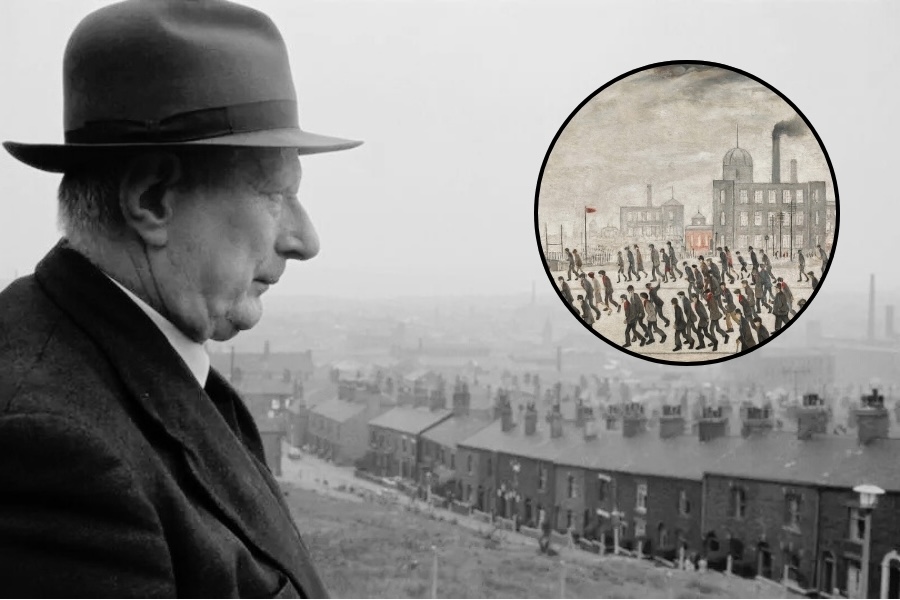Born in Stretford on 1st November 1887, Laurence Stephen Lowry grew up in Old Trafford before moving to Victoria Park in Rusholme. Described by his mum as “a clumsy boy”, L.S. Lowry later said he had an unhappy childhood. His parents showed little interest in his art, and he had few friends.
Did LS Lowry have a day job?
His early life and career in the north of England was pretty ordinary.
After leaving school, Lowry worked as an office boy in Manchester while paying for private art lessons. In 1905, he began evening classes at the Manchester School of Art, where French painter Adolphe Valette encouraged him to find his own style.
In 1909, the family moved to Pendlebury, Salford. Surrounded by mills, factories and terraced houses, Lowry found the world he wanted to paint. “My ambition,” he said, “was to put the industrial scene on the map because nobody had seriously done it.”
Life in Salford: Inspiration behind Lowry’s paintings
Lowry worked as a rent collector by day and painted by night. His simple colour palette – flake white, ivory black, vermilion, Prussian blue and yellow ochre – gave his cityscapes their unmistakable tone.

His best-known works, such as Coming from the Mill (1930), Going to the Match (1953), and The Cripples (1949), capture both the energy and hardship of northern life. Crowds bustle beneath smoking chimneys, yet each tiny figure seems alone – a powerful mix of community and isolation.
After caring for his mother until her death in 1939, Lowry continued painting through the war and was appointed an official war artist. Despite his growing fame, he stayed humble, turning down five British honours, including a knighthood. “There seemed little point,” he said, “once mother was dead.”
The Lowry at Salford Quays: Celebrating 25 years
Lowry died in 1976, aged 88, and was buried with his parents in Southern Cemetery, Manchester. His legacy lives on at the LOWRY arts and theatre centre in Salford Quays, which opened in 2000, kickstarting the regeneration of the area, and celebrates its 25th anniversary this year. The venue houses the world’s largest collection of his paintings – a fitting tribute to the man who captured the heart and soul of the North.


